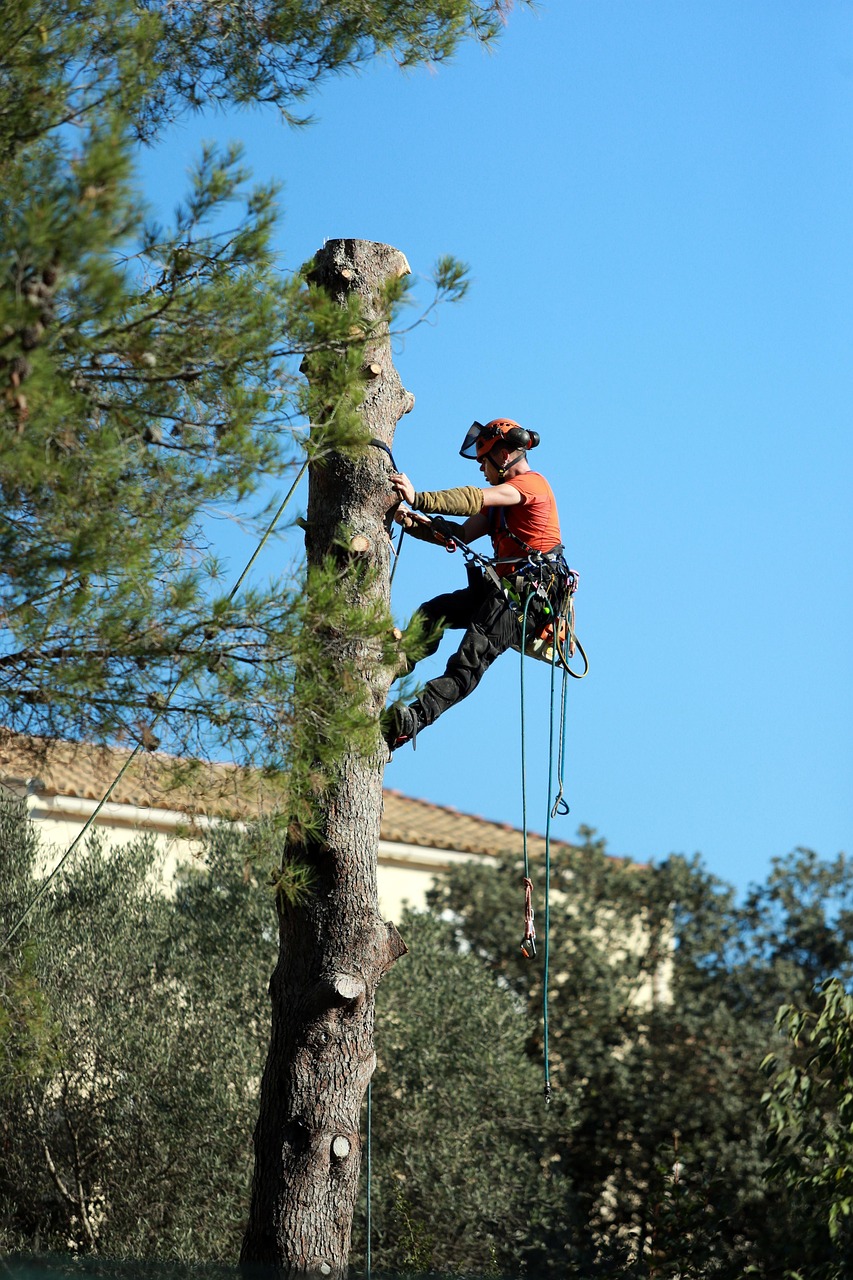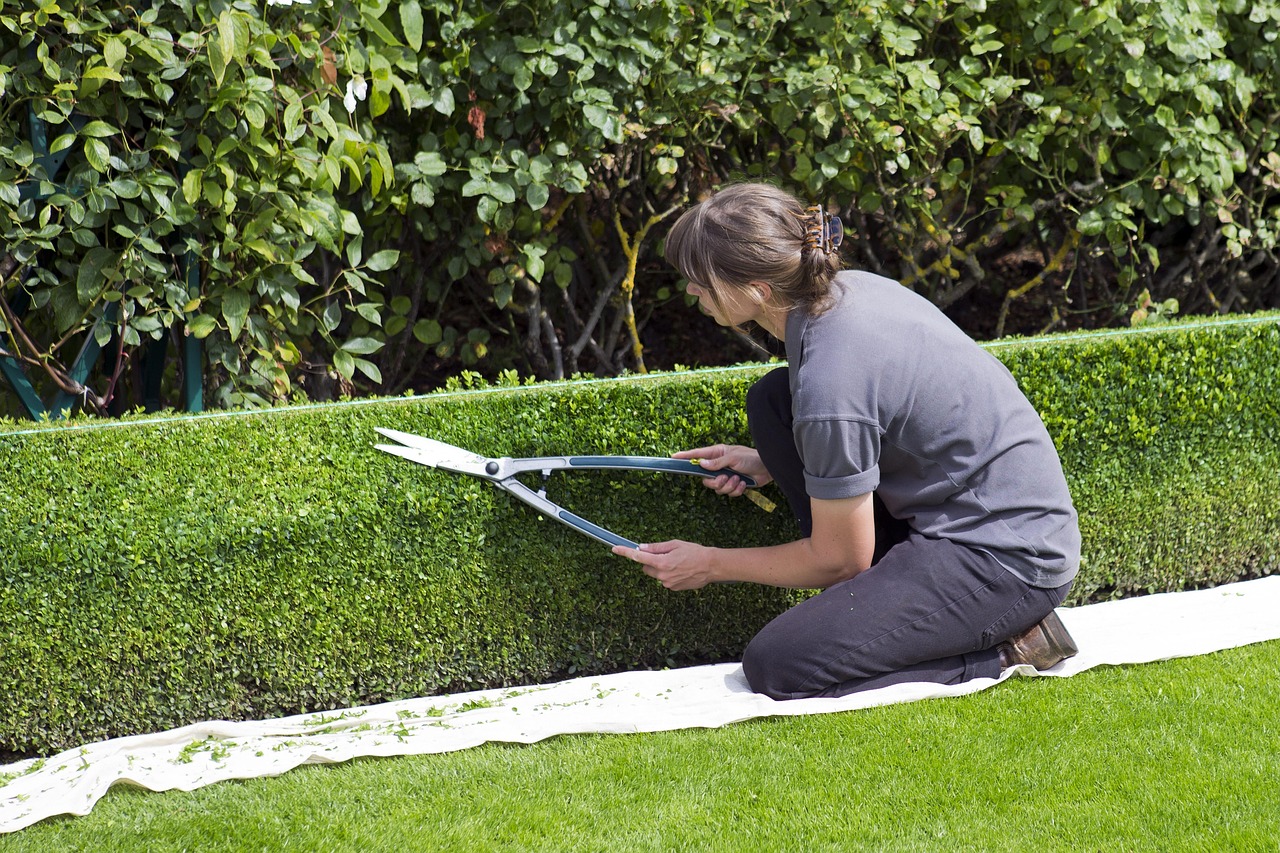Tree Trimming Services in St. Louis: What You Need to Know Before Hiring
When considering tree trimming services in St. Louis, it is essential to understand the importance of hiring qualified professionals. They ensure the health of your trees, enhance your property’s aesthetic appeal, and maintain safety by removing hazardous branches. Researching options and understanding services offered can lead to better decisions.
Tree trimming is a crucial part of maintaining the health and appearance of trees. In St. Louis, where a diverse range of tree species thrives, proper trimming practices are vital. Trees can grow unruly over time, leading to safety hazards and potential damage to your property. This is where expert tree trimming services come into play.

Many homeowners may underestimate the complexity of tree care. Trimming involves not only cutting branches but also ensuring that the tree remains healthy and continues to thrive. Professionals use various techniques tailored to each species, promoting better growth patterns while minimizing stress on the tree.
Understanding Tree Trimming Services
Before hiring a tree trimming service, it is important to understand what these services typically include:
- Assessment of tree health
- Pruning for aesthetics and health
- Removal of dead or diseased branches
- Safety trimming to prevent hazards
- Consultation regarding tree care and maintenance
In addition to basic trimming, many companies offer specialized services that can further enhance tree health and appearance. These can include cabling for support, stump grinding, and even complete tree removal if necessary. Understanding the full range of services available can help you make an informed choice.
Choosing the Right Tree Trimming Service

Selecting the right tree trimming service in St. Louis requires careful consideration. Here are some factors to keep in mind:
- Experience: Look for companies with a solid track record in tree care. Experienced professionals are more likely to provide quality services.
- Insurance: Ensure the company is insured. This protects you from liability in case of accidents during the trimming process.
- Certifications: Verify if the company has relevant certifications or memberships in professional organizations related to arboriculture.
- References: Ask for references from previous clients. This will give you insights into the company’s reliability and quality of work.
It is also beneficial to obtain multiple quotes before making a decision. This allows you to compare prices and services offered by different companies, ensuring you receive the best value for your investment.
The Importance of Timing

The timing of tree trimming plays a significant role in its success. Generally, late winter or early spring is considered the best time for most tree species. During this period, trees are still dormant, making it easier for them to recover from pruning.
| Tree Species | Best Time for Trimming |
|---|---|
| Maple | Late winter to early spring |
| Oak | Late summer to early fall |
| Pine | Late spring after new growth |
Understanding the best times for trimming specific types of trees can also aid in scheduling an appointment with a service provider.
By keeping these factors in mind, homeowners can navigate the process of hiring tree trimming services in St. Louis with greater confidence. The next step is to delve deeper into specific services offered by local professionals and their unique benefits.
Types of Tree Trimming Services
Tree trimming services can vary significantly based on the needs of the trees and the preferences of the property owner. Understanding the different types of services available is essential for making informed decisions. Here are some common types of tree trimming services offered by professionals in St. Louis:
- Canopy Thinning: This service involves selectively removing branches to allow more light to penetrate the canopy. It helps in maintaining tree health and promoting growth.
- Crown Reducing: This method reduces the overall size and height of the tree crown. It is particularly useful for trees that pose a risk to structures or power lines.
- Deadwooding: This involves the removal of dead, damaged, or diseased branches. It is crucial for preventing pest infestations and diseases from spreading.
- Tree Shaping: Professionals shape trees to enhance their aesthetic appeal. This technique is often used for ornamental trees and shrubs.
- Hazardous Tree Removal: In cases where a tree is dead or dying and poses a safety risk, removal is necessary. Experts assess the situation and safely remove such trees.
The Benefits of Professional Tree Trimming
Hiring a professional tree trimming service offers several advantages. Here are some key benefits to consider:
- Expertise: Trained arborists have the knowledge and skills to properly assess tree health and execute appropriate trimming techniques.
- Safety: Tree trimming can be dangerous, especially for large trees. Professionals use proper equipment and safety measures to minimize risks.
- Improved Aesthetics: Well-trimmed trees enhance the overall appearance of your landscape, adding value to your property.
- Health Maintenance: Regular trimming promotes healthier growth patterns, helping to prevent diseases and pest infestations.
- Time-Saving: Tree care can be time-consuming. Hiring professionals allows homeowners to focus on other important tasks.
What to Expect During a Tree Trimming Service
Understanding what happens during a tree trimming service can help ease any concerns you may have. Here is a typical process that professionals follow:
Initial Consultation
A representative will visit your property to assess your trees. They will discuss your concerns, evaluate the health of your trees, and recommend appropriate services. This consultation often includes:
- An assessment of tree species and health
- A discussion about any specific issues you have noticed
- Recommendations for trimming techniques or additional services
Service Execution
On the day of service, the team will arrive with the necessary equipment. The process typically includes:
- Setting up safety barriers around the work area
- Using specialized tools for trimming
- Carefully executing the trimming plan based on their assessment
Post-Service Cleanup
After the trimming is complete, professionals will clean up any debris from your property. This includes:
- Chipping branches into mulch
- Removing any cut branches or trunk sections
- Ensuring your yard is left clean and tidy
Cost Factors for Tree Trimming Services
The cost of tree trimming services can vary widely based on several factors. Understanding these can help you budget accordingly:
- Tree Size: Larger trees typically require more time and effort to trim, increasing costs.
- Tree Health: Trees in poor health may require additional care, affecting pricing.
- Location: If a tree is located in a hard-to-reach area or near power lines, it may increase labor costs due to safety concerns.
- Service Type: Specialized services like hazard removal or extensive shaping may cost more than basic pruning.
Getting detailed quotes from multiple service providers can help you find competitive pricing while ensuring quality service.

By understanding the various types of services, benefits, and factors influencing costs, homeowners in St. Louis can make well-informed decisions when hiring tree trimming professionals. These insights will contribute to maintaining healthy trees and enhancing the beauty of their landscapes.
Common Mistakes to Avoid When Hiring Tree Trimming Services
When looking for tree trimming services in St. Louis, homeowners may inadvertently make choices that could lead to unsatisfactory results. Being aware of common mistakes can help you avoid pitfalls during the hiring process.
- Not Researching the Company: Failing to check the reputation and experience of a tree trimming company can lead to hiring unqualified individuals. Look for online reviews, testimonials, and any complaints about the service.
- Ignoring Insurance and Licensing: Not verifying if a company has the necessary insurance and licenses is a significant oversight. This can leave you liable for accidents or damages that occur during the trimming process.
- Choosing the Cheapest Option: While it may be tempting to go with the lowest bid, this could result in poor quality work. Always consider the overall value rather than just price.
- Not Asking Questions: Failing to ask questions about the techniques used, equipment, and safety protocols can lead to misunderstandings about what to expect from the service.
- Neglecting a Written Agreement: Not having a written contract can lead to disputes regarding costs, timelines, and services provided. Always ensure you have a clear agreement in place.
Seasonal Considerations for Tree Trimming
The timing of tree trimming is critical for optimal health and aesthetics. Different seasons offer unique advantages and challenges. Here are some seasonal considerations for tree trimming in St. Louis:
Spring
Spring is often seen as an ideal time for trimming many tree species. This period allows for:
- Enhancing growth as trees wake from dormancy.
- Removing any dead branches that may have resulted from winter damage.
- Encouraging new growth with careful pruning techniques.
Summer
While summer is generally not recommended for heavy pruning, it can be beneficial for specific tasks such as:
- Light trimming to manage growth.
- Removing dead or diseased branches that are more visible.
Autumn
As leaves fall, it provides a clear view of the tree structure. Autumn offers the opportunity to:
- Evaluate the health of trees before winter.
- Perform light pruning after leaf drop to minimize stress on trees.
Winter
Winter is typically the best time for trimming most deciduous trees when they are dormant. Benefits include:
- Easier access to tree branches without leaves obstructing the view.
- Reduced stress on trees, allowing them to heal quickly come spring.
Tools Used by Professionals in Tree Trimming
Tree trimming professionals use various tools designed to ensure both efficiency and safety. Here are some commonly used tools:
- Pruning Shears: Ideal for small branches and precise cuts, pruning shears are essential for detailed work.
- Loppers: These are used for larger branches that require more leverage than pruning shears can provide.
- Saws: Hand saws or chainsaws are necessary for cutting through thick branches or entire tree sections.
- Ladders: Professionals often use ladders or aerial lifts to reach higher branches safely.
- Safety Gear: Helmets, gloves, goggles, and harnesses are vital for ensuring worker safety during trimming operations.
Environmental Impact of Tree Trimming
Tree trimming not only affects individual trees but also has broader environmental implications. A well-maintained tree can contribute positively to the ecosystem in several ways:
- Aesthetic Value: Healthy trees enhance landscapes, increasing property values and community appeal.
- Biodiversity Support: Properly managed trees provide habitats for various wildlife species.
- Air Quality Improvement: Trees play a crucial role in filtering pollutants from the air, contributing to healthier communities.
- Climate Regulation: Trees help regulate temperatures and provide shade, reducing energy costs for cooling homes.
Acknowledging the environmental benefits of tree trimming underscores its importance beyond mere aesthetics or safety, highlighting its role in promoting a healthier ecosystem in St. Louis.
Additional Considerations for Tree Care
Beyond the immediate benefits of tree trimming, there are additional factors to consider for ongoing tree care and maintenance. Taking a holistic approach will ensure that your trees remain healthy and thriving throughout the seasons.
Regular Maintenance
Tree trimming should not be viewed as a one-time task. Regular maintenance is essential for the long-term health of your trees. Here are some aspects of regular maintenance:
- Routine Inspections: Conducting annual inspections helps identify potential issues before they become severe. Look for signs of disease, pests, or structural weaknesses.
- Fertilization: Trees may benefit from periodic fertilization, especially if soil nutrients are lacking. Consult with a professional to determine the best type of fertilizer for your tree species.
- Watering: Newly planted trees require consistent watering, particularly during dry spells. Established trees may need assistance during prolonged droughts.
- Mulching: Applying mulch around the base of trees can help retain moisture, suppress weeds, and improve soil quality.
Pest and Disease Management
Pests and diseases can severely impact tree health. Being proactive in their management is crucial. Consider the following:
- Identification: Learn to identify common pests and diseases affecting local tree species. Early identification can lead to more effective treatments.
- Integrated Pest Management (IPM): This approach combines cultural, biological, and chemical methods to control pests while minimizing environmental impact.
- Consult Professionals: If you notice unusual signs on your tree, consult a certified arborist for an evaluation and treatment recommendations.
Community Resources and Support
In St. Louis, various resources are available to assist homeowners with tree care. Engaging with community programs can provide valuable knowledge and support:
- Local Arborist Associations: These organizations often offer workshops, seminars, and resources related to tree care and maintenance.
- Extension Services: University extension services may provide free or low-cost advice on tree health, pest management, and proper care techniques.
- Neighborhood Groups: Many neighborhoods have programs aimed at enhancing local green spaces, often providing resources or discounts for tree care services.
Final Thoughts
Choosing the right tree trimming services in St. Louis involves careful consideration of various factors, including the types of services available, costs, and the qualifications of service providers. Understanding seasonal implications and the tools used by professionals can further enhance your decision-making process.
The environmental benefits of maintaining healthy trees extend beyond aesthetics and safety. Healthy trees contribute to biodiversity, improve air quality, and help regulate the local climate. By investing in professional tree trimming services and ongoing maintenance, homeowners can ensure their trees thrive for years to come.
In conclusion, being proactive in tree care not only enhances the beauty of your property but also fosters a healthier environment for the community. With the right knowledge and support, you can successfully navigate the process of hiring tree trimming services while ensuring the long-term health and vitality of your trees.
Your trees are an invaluable asset to your home and community. By prioritizing their care through professional services and regular maintenance, you contribute positively to the landscape of St. Louis.
